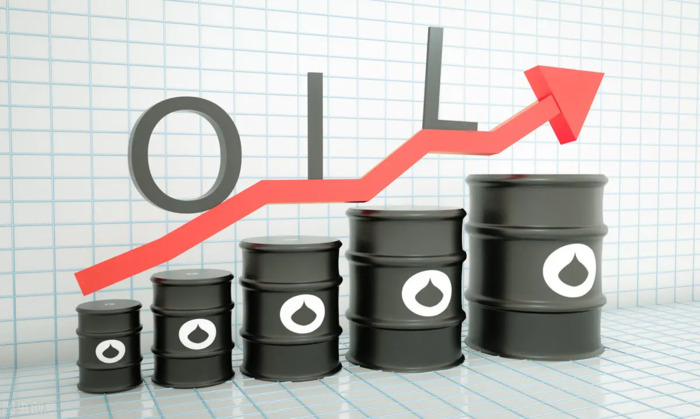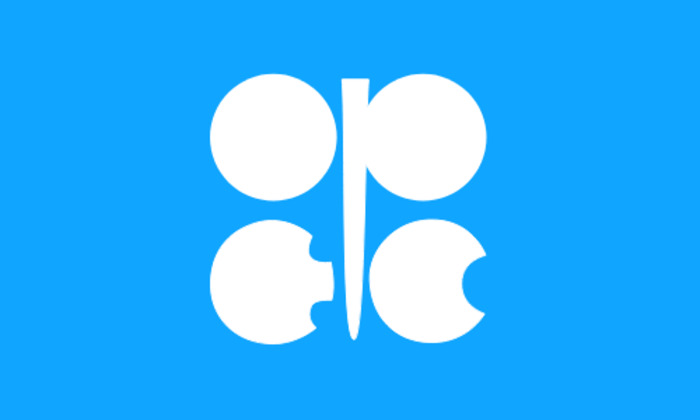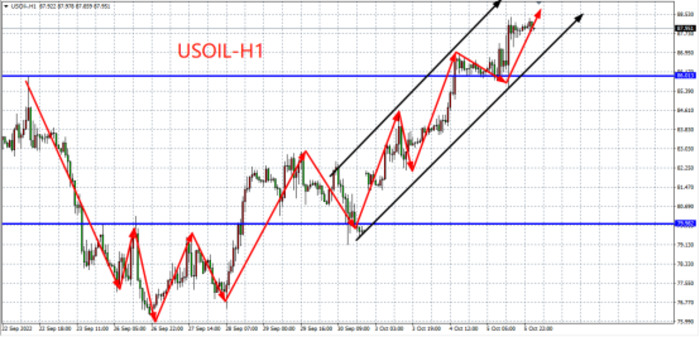OPEC's production cuts are implemented, how will the United States fight back?
 2022-10-06
2022-10-06
 1239
1239
OPEC+ sharply cut production by 2 million barrels per day, and oil prices rose more than 2% during the session. However, in the context of high inflation and the escalating conflict between Russia and Ukraine, it is necessary to guard against the implementation of a series of new measures in Europe and the United States to suppress oil prices.
Highlights of this round of OPEC+ conferences
At the OPEC+ ministerial meeting on Wednesday (October 5), members reached a consensus to cut production by 2 million barrels per day from November 2022. In addition, OPEC announced that the Joint Ministerial Monitoring Committee (JMMC) meeting will be adjusted to every two months, and the ministerial meeting will be adjusted to every six months. That means the next OPEC+ meeting will be in December.
It is worth noting that the 2 million barrels per day achieved by OPEC+ is the largest since the epidemic. Given that OPEC+ oil production in August was 3.583 million barrels per day lower than expected, there is a supply gap among member countries, which may mean that Benchmark production levels allocated to each oil-producing country have been adjusted. In fact, Saudi Arabia believes that the actual scale of production reduction is 1-1.1 million barrels per day.
After the data was released, U.S. crude oil further climbed to an intraday high of US$88.41, approaching the US$90 mark, recording a three-day rise in a row, with a cumulative increase of 11% this week, the largest weekly increase since the week of February 28.
Goldman Sachs raises oil price forecast
There is no doubt that the direct reason for OPEC+'s sharp production cut is that international oil prices have fallen sharply by more than 30% since mid-June, which directly damages the interests of OPEC oil-producing countries. Global oil demand is showing worrying signs as major central banks such as the Federal Reserve accelerate monetary tightening. According to data, the global oil supply has turned to excess supply since May, and the oil supply surplus in September was 1.7 million barrels per day, the fourth consecutive month that the excess supply exceeded 1 million barrels per day. Oil market conditions are deteriorating faster than OPEC+ countries expected.
In fact, in addition to facing a decline in oil demand, the lack of investment also plagues OPEC members. JPMorgan said crude prices would need to climb to "significantly higher" levels before drillers could significantly increase spending to increase supply.
OPEC+ wants oil prices to stay around $90 a barrel as many OPEC members set their balanced budgets for 2023 at $90, the Nigerian minister said. According to data previously released by the St. Louis Fed, the oil price for the UAE to achieve a balanced budget in 2022 is 76 US dollars, and Saudi Arabia is 79 US dollars.
In any case, from the 100,000 barrels per day (bpd) cut announced at the OPEC+ meeting in September to the 2 million bpd cut announced at the October meeting, this highlights OPEC+'s determination to maintain oil price stability. Goldman Sachs sees the OPEC+ production cuts as very positive for oil prices, raising its fourth-quarter Brent forecast by $10 to $110 a barrel. In addition, Goldman Sachs said that if the production cuts continue until December 23 next year, the move would be equivalent to making Brent oil prices in 2023 $25 higher than our previous forecast of $107.5/barrel, and if inventories are completely depleted, oil prices may be will rise to higher levels, in which case demand destruction must be used as a last resort.

免費開通賬戶> > 入金最高送 $88
OPEC+ production cuts may lead to US counterattack
After OPEC+'s decision to cut production by 2 million barrels per day was announced, the White House declared that OPEC+'s decision to ally with Russia was wrong and expressed disappointment at OPEC+'s "short-sighted decision".
From the perspective of the United States, OPEC's sharp production cuts will push up oil prices, which will help Russia obtain more war funds to maintain the current stalemate between Russia and Ukraine, and even affect the inflation outlook of the United States. In addition, the OPEC production cuts also hurt the chances that U.S. President Joseph Biden is lowering gasoline prices further for American motorists, especially as the U.S. midterm elections on Nov. 8 loom.
Countermeasures that the United States will likely take
- The United States may further release the Strategic Petroleum Reserve (SPR); the White House said on Wednesday (October 5) that the U.S. Department of Energy will deliver another 10 million barrels of oil to the market from the Strategic Petroleum Reserve next month. This is part of the US announced the release of 1.8 trillion barrels (SPR). The EIA report released on the same day showed that the US Strategic Petroleum Reserve (SPR) inventory decreased by 6.194 million barrels to 416.4 million barrels in the week of September 30, a decrease of 1.47%. Given that SPR inventories are already at their lowest level in 40 years, further release of more means replenishment, so the impact on oil prices is expected to be limited.
- The United States plans to ease sanctions on Venezuela; on Wednesday (October 5), according to the Wall Street Journal, the Biden administration is preparing to ease sanctions on Venezuela, which may allow Chevron to resume oil exploration in Venezuela, for the U.S. and European markets could open the way for Venezuela's oil exports to reopen. If the deal passes, Chevron and U.S. Petroleum Services are allowed to resume operations in Venezuela, which would boost global oil supplies. It is worth mentioning that Iran has expressed its desire to join OPEC+, which may mean that the future of the Iranian nuclear negotiation is expected to become the focus again.
- "No Oil Production or Export Cartel (NOPEC)" on Wednesday (October 5) US National Security Adviser Sullivan and White House National Economic Council Director Budis said in a statement that in view of today's (OPEC+) The Biden administration will also consult with Congress on additional tools and powers to weaken OPEC's control over energy prices. Investors speculated that the United States may reintroduce the NOPEC bill. If the bill is eventually signed into law, the United States will be able to sue oil-producing countries for violating monopoly laws.
- Accelerate the promotion of the oil price ceiling against Russia; as the author said, the increase in the price of oil against Russia has touched the actual interests of oil-producing countries. Russia said that the oil price ceiling may cause Russia to temporarily reduce production. U.S. Treasury officials said on Tuesday (Oct. 4) that three capping sanctions are currently planned for Russia, with the Dec. 5 sanctions targeting Russian crude oil, followed by diesel and then lower-value products such as naphtha.

免費開通賬戶> > 入金最高送 $88
In addition, according to market sources, EU countries are close to reaching an agreement on a new sanctions package that would cap the price of Russian seaborne oil. The main remaining hurdle now is agreeing on the details of a price cap for Russia's oil sales to third countries, with the EU facing resistance from several seafaring nations.
It is expected that the United States and Europe will accelerate and increase the price limit on Russian oil, but the impact on oil prices remains to be seen.

免費開通賬戶> > 入金最高送 $88
Looking ahead, after OPEC cuts production, how Europe and the United States counteract will be a key factor in the market outlook. The technical aspect shows that the short-term trend has entered an accelerated upward trend from the completion of the bottoming. At present, the standard upward trend channel is maintained. The latest support has moved up to the $86 line. It will continue to be bullish above this level, and the target is to reach the $90 mark. If the resistance is effectively broken above, it can confirm the opening of a new rally. If the resistance is blocked, the probability of a downward pullback and weakening is high.
The above information is provided by special analysts and is for reference only. CM Trade does not guarantee the accuracy, timeliness and completeness of the information content, so you should not place too much reliance on the information provided. CM Trade is not a company that provides financial advice, and only provides services of the nature of execution of orders. Readers are advised to seek relevant investment advice on their own. Please see our full disclaimer.

CM Trade
As a world leading financial trading platform, CMtrade Provides comprehensive one-stop trading services and opportunities for traders.
[Products]
The platform provides over 32 kinds of popular financial products such as forex, precious metals, crude oil, indices, cryptocurrencies and more.
[System]
2 top trading systems CM Trade MT4 / CM Trade APP, powerful and easy to operate
[Service]
Comprehensive market news, professional market analysis, 7*24 hours online customer service
[Advantage]
Low cost, high leverage, flexible one-stop all day two-way trading.
[Authority]
Licensed and strictly regulated by authorities. Traders deposits are independently kept by the bank. Fast deposit and withdrawal. Fair, efficient and transparent trading environment.
CM Trade Mobile Application
Economics Calendar
MoreYou May Also Like



 简体中文
简体中文
 ภาษาไทย
ภาษาไทย
 繁體中文
繁體中文
 Indonesia
Indonesia











